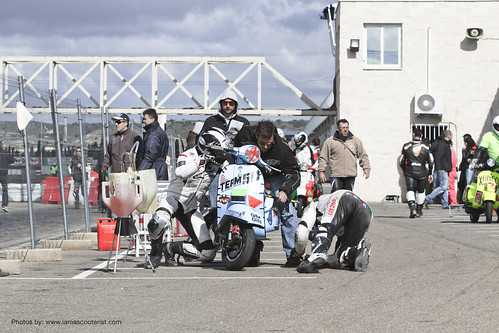So you buy a scooter and something breaks. Who is
going to fix it? Well, if you've bough in person from our retail store
in California,? we have access to parts, shop manuals and we will
have mechanics trained to fix your scooter. All you have to do is
bring them in.
But what if you are located outside of California, we
have a few suggestions for you. You can try contacting local
motorcycle (or better still, scooter) repair shops. If they are not
very enthusiastic about working on a Chinese scooter, no worry! Have
them contact our tech support department directly. We will make sure
they will have the easy access to our spare parts and the technical
support they need. Remember, we are the only company who actually
carries all common parts in stock.
150cc engine and transmission as used in many Chinese scooters
You might also get some help from a lawn mower repair
shop. They are used to working on small engines and the engine in a
scooter isn't all that different from the engine in a lawn mower. You
can also try snowmobile and ATV repair shops.
CVT (transmission) belt. Price ~ $40. Belt life anywhere from 2500 to 10,000 miles
It's not a bad idea to keep a few spares (such as a
spare spark plug and CVT belt) on hand, just in case you need them
(and eventually, you will). It's a good idea to remove the CVT cover
on your new scooter and read the number on the belt BEFORE you need to
change it. Belt sizes vary, even on the same nominal scooter "model"
and by the time it fails, the size markings may have worn off! The
belt size is usually three numbers such as "835-20-30". This would
mean the belt is 835mm long, 20mm wide and has a cross section with a
30¡ã bevel angle.
The best way to avoid needing repairs is regular
maintenance, which means changing the oil regularly, changing the fuel
filter and spark plug at the proper intervals, checking the CVT belt
and air filter, checking the tires and going around the scooter at
least once a month and making sure that all the bolts are tight
(especially the bolts holding the muffler on). Use the recommended
grade of gas (usually higher than 90 octane for most Chinese scooters)
and add fuel stabilizer if the scooter isn't going to be driven for a
while.
Though you won't find individual repair manuals for
every different Chinese scooter, they are all pretty similar and many
use the same engines and transmission parts.. There are a couple of
books which may help. The Haynes guide is probably the best general
reference for the repair of "generic" (i.e. Chinese) scooters. The
"Complete Idiot's Guide to Motor Scooters" is pretty basic and really
doesn't give much detailed information, though it's not a bad
introduction to scooters if you really know nothing at all about them.
Source: www.scooterdepot.us












